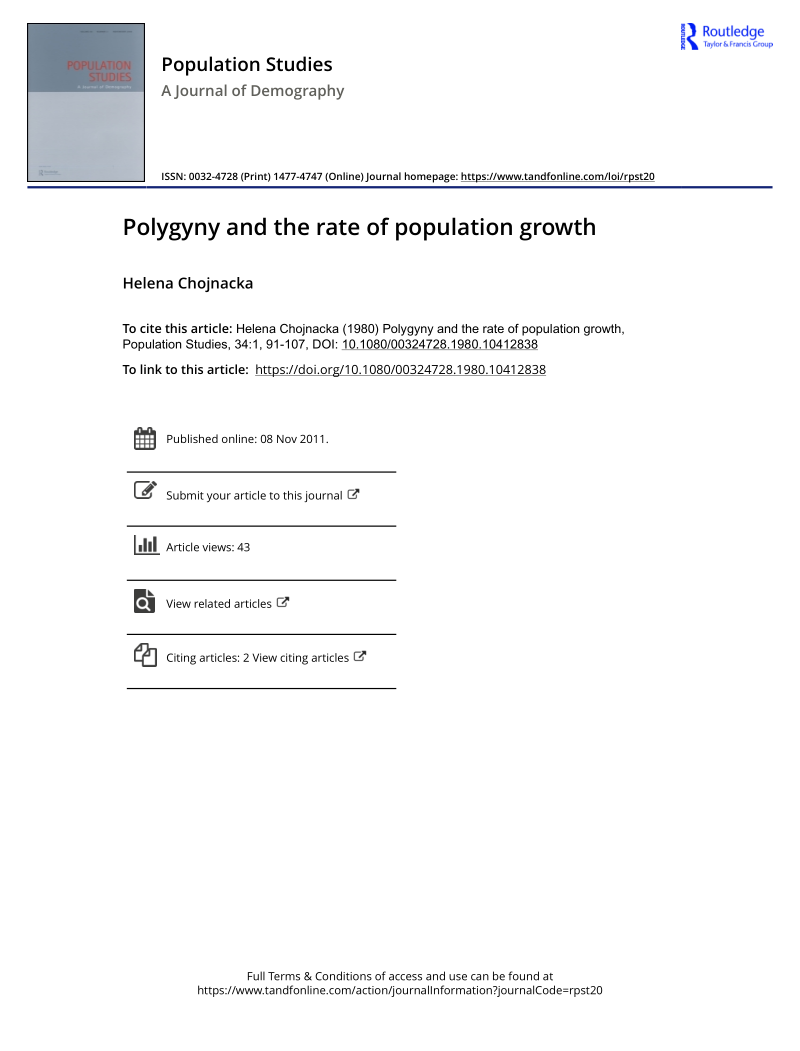Population Studies article analyzes African data and connects polygyny to higher population growth through higher marital rates.
- Type
- Academic / Technical Report
- Source
- Helena Chojnacka Non-LDS
- Hearsay
- Secondary
- Reference
Helena Chojnacka, "Polygyny and the rate of population growth," Population Studies 34, no. 1 (1980): 106
- Scribe/Publisher
- Population Studies: A Journal of Demography
- People
- Helena Chojnacka
- Audience
- Reading Public
- Transcription
Polygyny and the Rate of Population Growth
Polygyny is relatively frequent in the second half of the twentieth century among populations in Africa, a continent with high rates of population growth. It varies from about 37 per cent in Guinea, against about 20 per cent on average in West Africa as a whole, to around three percent in North African countries like Egypt, Libya, or Algeria. 1 It should be borne in mind, however, that the incidence of polygyny measured as a percentage of husbands with two or more wives, is only a direct indicator. The demographic consequences of polygyny, although usually practised only by a fraction of a population, are more pervasive, since they affect the proportion of married women and their age at first marriage in the whole community. Accordingly, a transition from polygynous to monogamous type of unions may have significant effects upon the nuptiality pattern of a country and in turn upon its rate of population increase.
Our considerations are confined to three questions: (1) What are the roots of and motives for the practice of polygyny in African societies? (2) How is it feasible to practice polygyny in societies characterised by a more or less balanced sex ratio? (3) How and to what degree does polygyny affect the age pattern of fertility and the rate of population growth?
- Citations in Mormonr Qnas
The B. H. Roberts Foundation is not owned by, operated by, or affiliated with the Church of Jesus Christ of Latter-day Saints.

